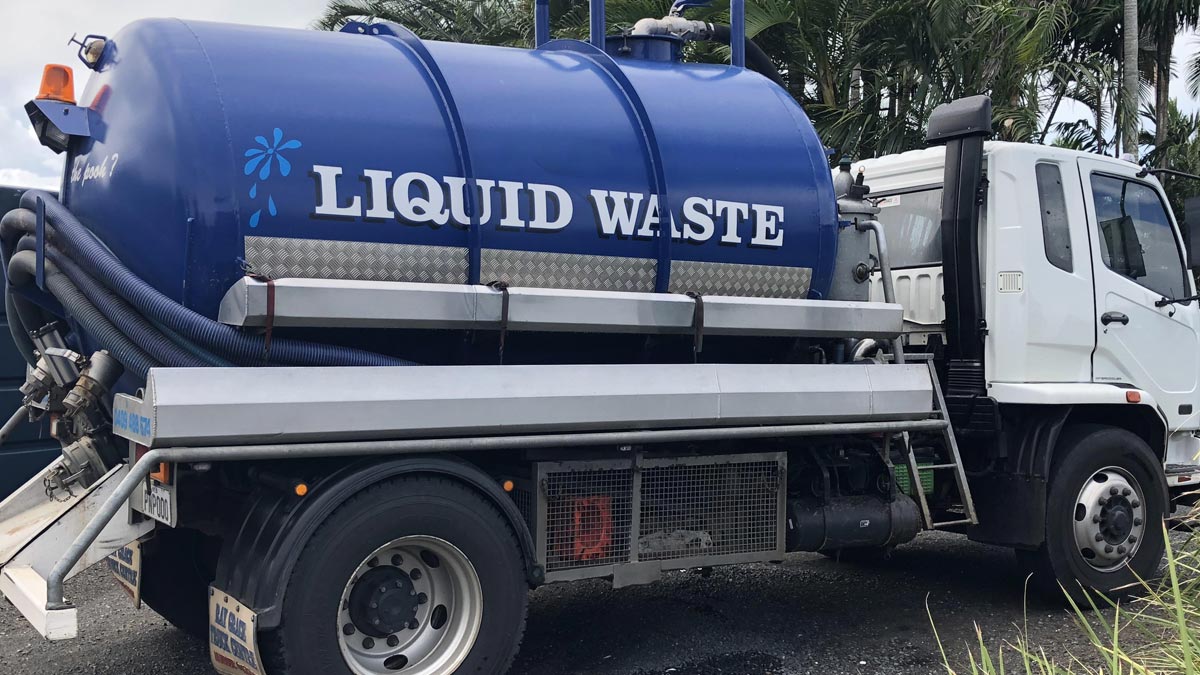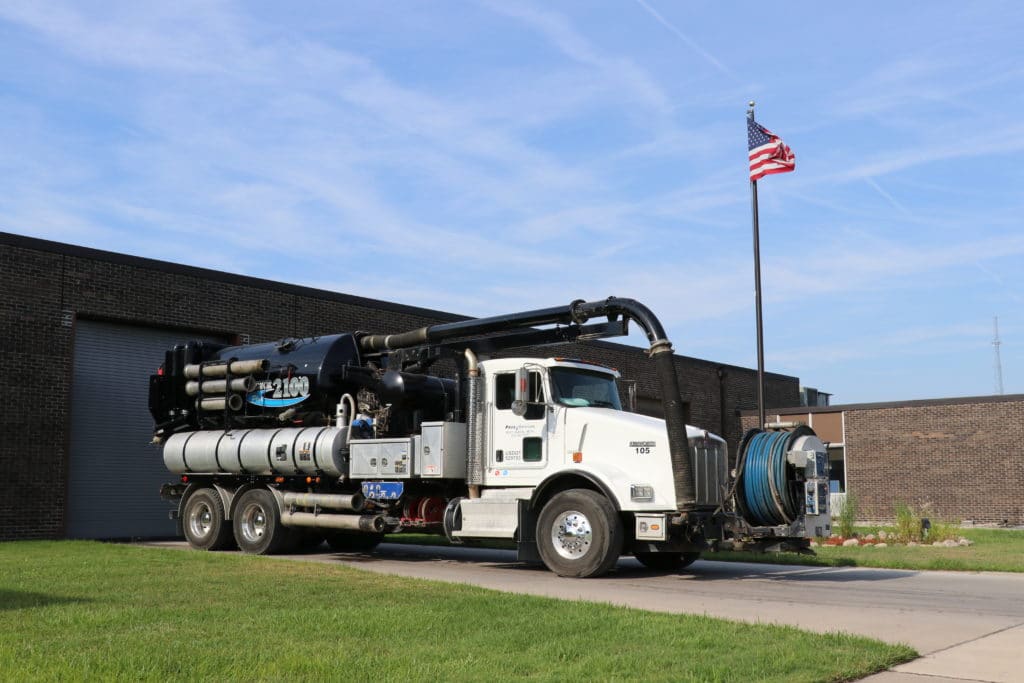Just How Fluid Garbage Disposal Functions: An In-depth Summary of Methods and Technologies Employed

Overview of Liquid Waste Types
The intricacy of fluid waste kinds demands a detailed understanding of their qualities and ramifications for disposal. Liquid waste can broadly be categorized right into numerous kinds, including commercial, municipal, farming, and contaminated materials. Each category shows distinctive properties, requiring specific management approaches to minimize ecological and health and wellness threats.
Industrial fluid waste stems from making processes and frequently consists of a series of contaminants, such as hefty steels, solvents, and natural substances. Local liquid waste, primarily consisting of wastewater from homes and industrial establishments, has raw material, nutrients, and virus (industrial wastewater treatment). Agricultural fluid waste, including drainage from farms, might consist of plant foods, chemicals, and animal waste, posturing dangers to water quality and ecological communities
Hazardous fluid waste is defined by its toxicity, sensitivity, or possible to trigger damage. This category includes substances like acids, bases, and specific chemicals that demand strict handling and disposal methods. Recognizing these diverse fluid waste types is critical for establishing reliable disposal methods and guaranteeing compliance with ecological policies. Correct classification and characterization are essential for carrying out appropriate treatment strategies and decreasing the adverse influence on public health and the atmosphere.
Physical Therapy Techniques

Screening is the first action, where larger particles and particles are removed from the liquid waste making use of screens or grates. In sedimentation tanks, larger fragments settle at the base, developing a sludge layer, while the cleared up liquid can be more treated.
Filtration is one more important method that entails passing the liquid through permeable materials, such as sand or membranes, to catch smaller sized bits. This step enhances the quality of the liquid, making it suitable for succeeding treatment procedures.

Chemical Therapy Techniques
Chemical treatment strategies are necessary for efficiently taking care of liquid waste, specifically in resolving dissolved and colloidal contaminants that physical techniques might not sufficiently get rid of. These methods utilize various chemical agents to neutralize, precipitate, or transform harmful substances right into much less dangerous forms.
One typical technique is coagulation and flocculation, where chemicals such as alum or ferric chloride are contributed to promote the gathering of put on hold particles. This procedure boosts sedimentation, enabling much easier elimination of the resulting sludge. Additionally, oxidation processes, utilizing representatives like chlorine or ozone, are utilized to break down complex natural substances and virus, rendering the waste much safer for discharge or further treatment.
Neutralization is an additional critical technique, which changes the pH of acidic industrial wastewater treatment or alkaline waste streams to neutral degrees, avoiding possible injury to downstream systems and the environment. Additionally, advanced oxidation procedures (AOPs) use combinations of oxidants and ultraviolet light to deteriorate relentless pollutants, achieving a higher level of therapy efficiency.
Biological Treatment Processes
Biological treatment processes play an essential function in the administration of liquid waste by using bacteria to disintegrate raw material and decrease pollutant levels. These processes can be broadly classified into cardiovascular and anaerobic treatments, each employing particular microbial communities to accomplish reliable waste destruction.
Cardiovascular treatment involves the use of oxygen to facilitate the breakdown of natural materials by germs. This process is generally applied in triggered sludge systems, where oygenation containers offer a favorable atmosphere for microbial growth, leading to the oxidation site link of natural toxins. The resultant biomass can be separated from treated effluent with sedimentation.
In contrast, anaerobic therapy happens in the absence of oxygen, counting on different bacteria to damage down natural matter. This approach is especially beneficial for high-strength waste, as it produces biogas, a renewable resource source, while reducing sludge manufacturing. Technologies such as anaerobic digesters are often employed in industrial and municipal applications.
Both anaerobic and aerobic organic therapies not just reduce the ecological effect of fluid waste however additionally help with source healing, making them essential parts of sustainable waste monitoring strategies. Their effectiveness, effectiveness, and versatility sustain their widespread execution across different fields.
Emerging Technologies in Disposal
Ingenious strategies to liquid garbage disposal are rapidly progressing, driven by innovations in technology and a boosting focus on sustainability. Among these arising modern technologies, membrane bioreactors (MBRs) have acquired grip for their capacity to integrate biological therapy with membrane layer purification, resulting in premium effluent that can be recycled in various applications. MBRs enable smaller impacts and much more effective procedures contrasted to traditional systems.
Another promising development is using anaerobic food digestion combined with nutrient recovery technologies, which not only deals with fluid waste yet also produces biogas and recuperates important nutrients like nitrogen and phosphorus. This double benefit enhances resource effectiveness and minimizes ecological effect.
Additionally, advanced oxidation procedures (AOPs) are being taken on for the destruction of complex natural toxins. These techniques use powerful oxidants and catalysts to break down contaminants at the molecular level, supplying a very efficient option for difficult waste streams.
Additionally, the combination of synthetic intelligence check over here and machine understanding in waste monitoring systems is enhancing functional efficiency and anticipating upkeep, resulting in reduced prices and improved environmental conformity. These modern technologies reflect a significant shift towards even more sustainable and reliable fluid waste disposal methods.
Conclusion
In conclusion, efficient fluid waste disposal demands a detailed understanding of numerous methods and technologies. The combination of physical, chemical, and organic treatment techniques ensures the reliable administration of varied waste types. Furthermore, the development of ingenious technologies improves therapy efficacy and promotes sustainability in waste administration techniques. By constantly advancing these techniques, it becomes feasible to address the growing obstacles related to liquid waste, inevitably adding to environmental management and resource recovery.
Fluid waste disposal is an essential element of ecological administration, requiring a thorough understanding of numerous methods and innovations tailored to various waste types. Fluid waste can generally be classified right into a number of types, consisting of industrial, local, farming, and dangerous waste. Agricultural fluid waste, consisting of drainage from ranches, may consist of fertilizers, pesticides, and pet waste, positioning threats to water high quality and communities.
Different physical treatment methods play an important duty in managing liquid waste properly - industrial wastewater treatment.In verdict, effective fluid waste disposal demands a comprehensive understanding of numerous techniques and technologies